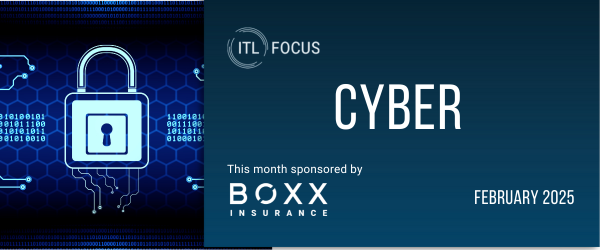Organizations today generate, store, process, and manage more data than ever before. Data is the backbone of the modern organization. As the volume of on-premises and cloud data continues to skyrocket, the challenges of protecting it also rise.
Data needing protection can be broadly classified as structured and unstructured data, and each has its own set of security requirements.
Structured Vs. Unstructured Data
Structured data is highly organized, easily searchable, and often stored in databases. This data type follows a specific structured format, such as rows and columns in a database. Customer information, transaction records, and inventory data are all examples of structured data, and it is easier to manage and analyze than unstructured data due to its predefined structure.
Unstructured data lacks a specific format, schema or structure, making it harder to identify and more challenging to analyze, store, and manage than structured data. Unstructured data includes emails, message text, attachments, metadata, and communication threads. Unstructured data also includes text found in Word documents, PDFs, or plain text files containing unorganized information, such as articles, reports, and contracts. In addition, multimedia files including images, videos and audio files often contain vast amounts of information without a consistent format to protect. Social media posts are another class of unstructured data, including text, image, video, and metadata content from platforms such as LinkedIn, Twitter, TikTok, Facebook, and Instagram.
See also: The Role of Data Cleansing in Insurance
Unstructured Data Characteristics
The traits of unstructured data can be characterized by four “V” words. First there is volume, as unstructured data is exponentially growing due to digital communication, internet-connected devices and social media. Next, the variety of unstructured data takes on numerous formats and types, making it difficult to manage and analyze. The rapid generation and sharing velocity of this data cause significant storage, processing, and security challenges. Finally, the veracity of unstructured data, with its varying quality and accuracy, requires investment in validation and cleanup.
Risks and Challenges of Protecting Unstructured Data
Some of the main risks and challenges associated with unstructured data include:
- Data breaches – Unprotected or poorly managed unstructured data is vulnerable to cyber-attacks, which can result in data breaches and unauthorized disclosure of sensitive information. The lack of a consistent structure makes it difficult to apply uniform security measures to avoid these breaches.
- Compliance issues and risks – Compliance with data protection regulations, such as GDPR and CCPA, requires proper management, protection and auditing of unstructured data, including personal data.
- Storage and management concerns – The sheer volume and variety of unstructured data can tax an organization’s resources, requiring adequate storage, processing power, and efficient secure management practices.
- Identification and categorization challenges – Identifying and classifying sensitive unstructured data is difficult, labor-intensive and time-consuming.
- Limited access controls – Unstructured data often has minimal or inconsistent access controls, significantly increasing the risk of unauthorized access.
Due to many of the challenges discussed, unstructured data has become an attractive target for cybercriminals. Given the importance and potential risks associated with unstructured data, it is critical for organizations to invest in effective strategies and solutions to safeguard it.
Unstructured Data Protection Strategies
Whether data is structured or unstructured, there are three key components to a successful protection strategy – identifying the data, classifying it, and remediating the risk.
Organizations need to be able to identify sources of unstructured data and classify and categorize them based on sensitivity. To reduce risk, organizations need to use role-based access controls and the 'least privilege access' principles (for example, zero trust) to limit access to sensitive data. To protect data from unauthorized access, organizations should encrypt data in transit and at rest. And regularly monitoring and reviewing access logs and addressing suspicious activities help improve data security hygiene.
The best solutions for protecting unstructured data leverage AI and machine learning. AI-driven data classification speeds the process and accuracy of identifying and categorizing sensitive data, while AI-powered threat prevention and anomaly detection tools can detect and prevent threats in real time, reducing the risk of data loss. In addition, machine learning algorithms are equipped to analyze user behavior and suggest appropriate access controls.
See also: Top 10 Challenges for Data Security
Protecting Both Types of Data with DSPM
To achieve comprehensive data protection across the board, organizations must adopt a unified approach that covers both structured and unstructured data. Effective data protection solutions should provide a holistic view of all data types, enabling organizations to implement consistent security policies and practices across their entire data landscape.
One popular, proven approach to this challenge is advanced data security posture management (DSPM). DSPM empowers organizations to discover structured and unstructured data and gain comprehensive visibility into where sensitive data resides and the types of sensitive data that exist. It also classifies data by tagging and labeling it. In addition, DSPM monitors and identifies risks by detecting and assessing behavior and usage of business-critical data, preventing potential breaches before they occur. Finally, DSPM remediates and protects sensitive information against unauthorized access and data loss.
With DSPM, as sensitive structured and unstructured data moves through the network and across data stores, it is labeled appropriately no matter where it resides. It is then monitored for risks, such as inappropriate permissions, risky sharing, inaccurate entitlements, and wrong location. If any risks are detected, they can be remediated.
Understanding the differences between structured and unstructured data is crucial for implementing effective holistic data protection strategies. Organizations must recognize the unique challenges posed by unstructured data and adopt advanced solutions, such as advanced DSPM, that leverage AI and machine learning to safeguard all types of data. By doing so, they can mitigate risks, ensure compliance, and derive valuable insights to drive growth and innovation.








